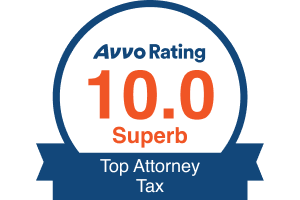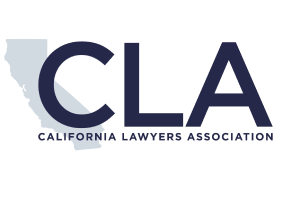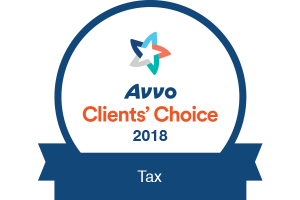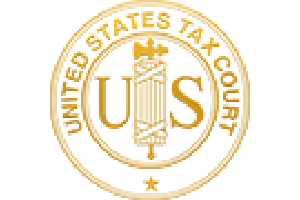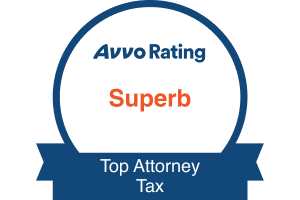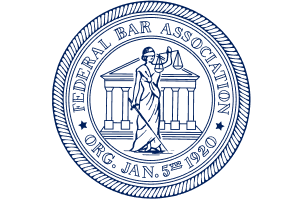Getting Results
CDTFA Restaurant Sales Tax Audit
How the CDTFA Audits Restaurants in California:
The California Department of Tax and Fee Administration (CDTFA) is responsible for administering the state’s sales and use tax programs, ensuring that businesses, including restaurants, accurately report and remit taxes on taxable sales. Restaurants sales tax audit, as cash-intensive businesses in the hospitality sector, are frequent targets for CDTFA audits due to their high volume of cash transactions, potential for underreporting, and complex sales tax rules. These audits aim to verify compliance with California’s sales and use tax laws, which apply to retail sales of tangible personal property, including food and beverages, unless specifically exempted. With California’s state sales tax rate at 7.25% (plus local taxes up to 10.25% in some jurisdictions), the stakes are high for CDTFA restaurant sales tax audit.
Understanding CDTFA Sales Tax Audits for Restaurants
A CDTFA sales tax audit is a detailed examination of a business’s financial records to ensure that it has correctly collected, reported, and remitted sales and use taxes as required by California law. For restaurants in sales tax audits, the focus on verifying taxable sales, exemptions, and deductions, as well as ensuring that use taxes are paid on purchases not subject to sales tax (e.g., out-of-state equipment purchases). The CDTFA’s authority stems from the California Revenue and Taxation Code, and its audits typically cover a three-year look-back period for taxpayers who have filed returns, extended to eight years for non-filers.
Restaurants are particularly vulnerable to audits due to:
- Cash Transactions: Cash payments, including tips, are harder to track and prone to underreporting, making restaurants a prime target.
- Complex Taxability: Food and beverage sales have nuanced tax rules. For example, hot prepared foods are taxable, while cold foods or groceries are often exempt, leading to potential errors.
- High Transaction Volume: Restaurants process thousands of transactions annually, increasing the risk of reporting mistakes.
- Industry Reputation: The hospitality sector, including restaurants, has a reputation for tax irregularities, prompting closer scrutiny.
The CDTFA’s goal is to promote compliance, recover underpaid taxes, and deter fraud, such as the use of zappers—software that manipulates point-of-sale (POS) systems to underreport sales. A 2014–2019 CDTFA pilot study found that 19% of audited California restaurants used zappers, highlighting the agency’s focus on technology-driven tax evasion.
CDTFA Audit Process for Restaurants
The CDTFA employs a structured restaurant sales tax audit process, tailored to the restaurant industry’s unique characteristics, such as cash-heavy operations and specific taxability rules. Below is a detailed breakdown of the audit process, informed by CDTFA guidelines and industry insights.
1. Audit Initiation and Notification
- Selection Triggers: Restaurants are selected for audits based on:
- Mismatches: Discrepancies between sales tax returns (CDTFA-401) and federal income tax returns (e.g., Form 1120, 1040 Schedule C), such as differing gross sales amounts.
- Cash-Based Operations: Restaurants with high cash transactions are flagged due to underreporting risks.
- High Exempt Sales: A high ratio of exempt sales (e.g., cold food to-go) compared to industry norms triggers scrutiny.
- Late or Inconsistent Filings: A history of late or irregular sales tax filings signals poor bookkeeping.
- Industry Risk: Restaurants in the hospitality sector are targeted due to known noncompliance patterns.
- Tips or Referrals: Information from whistleblowers, vendors, or related audits (e.g., a supplier’s audit revealing discrepancies).
- Random Selection: The CDTFA audits approximately 1% of active accounts annually, including random audits.
- Notification: The CDTFA sends an audit engagement letter outlining:
- The audit’s scope (typically three years).
- A preliminary list of required documents (e.g., sales tax returns, bank statements, POS records).
- A deadline (usually 30 days) to contact the auditor and schedule an initial meeting.
- The possibility of an in-person sales tax audit at the restaurant or a remote review.
2. Initial Information Gathering
- Document Requests: Auditors request a comprehensive set of records to verify taxable sales and exemptions, including:
- Sales Records: Cash register tapes, Z-tapes, daily/monthly sales reports, and third-party delivery platform statements (e.g., DoorDash, Uber Eats).
- Financial Records: Bank statements, merchant credit card statements, ledgers, balance sheets, and profit/loss statements.
- Tax Returns: Federal and state income tax returns, sales tax returns (CDTFA-401), and 1099-K forms from payment processors.
- Purchase Records: Invoices, purchase orders, and receipts for inventory, equipment, and supplies to verify use tax compliance.
- Exemption Documentation: Resale certificates, exemption certificates for nontaxable sales (e.g., food donated to nonprofits), and tip records.
- Site Visits: Auditors may conduct on-site inspections to observe operations, review POS systems, and perform tests like pour tests (measuring alcohol dispensed per drink) to estimate unreported sales.
3. Examination and Testing
- Verification Methods: The CDTFA uses industry-specific techniques to verify gross receipts and taxable sales for most restaurants:
- Pour Tests: Common in bars and restaurants, auditors measure alcohol poured per drink to estimate sales, comparing results with reported beverage revenue. Undercover pour tests may be conducted to detect underreporting.
- Markup Analysis: Auditors calculate expected sales based on inventory costs (e.g., food and beverage purchases) and industry-standard markups, flagging discrepancies with reported sales.
- Cash vs. Credit Tests: Auditors compare cash-to-credit sales ratios with industry averages, as high cash ratios may indicate underreporting.
- Statistical Sampling: Due to high transaction volumes (e.g., 100,000+ transactions over three years), auditors sample 2–3 days of data and extrapolate errors across the audit period. This can lead to overstated liabilities if not challenged.
- Bank Deposit Analysis: Auditors reconcile bank deposits with reported sales to detect unreported income.
- Zapper Detection: Auditors examine POS systems for sales suppression software, cross-referencing transaction logs with reported sales.
- Exemption Scrutiny: Auditors verify exempt sales, such as cold food to-go or sales for resale, ensuring proper documentation (e.g., resale certificates).
- Use Tax: Auditors check purchases (e.g., kitchen equipment, supplies) from out-of-state vendors to ensure use tax was paid.
4. Audit Findings and Resolution
- Exit Meeting: The auditor presents findings, detailing any underreported sales, unremitted taxes, or improper exemptions. A Report of Field Audit or Report of Investigation summarizes the results.
- Proposed Assessment: If discrepancies are found, the CDTFA issues a Notice of Determination, billing the taxpayer for unpaid taxes, interest, and penalties (e.g., 10% negligence penalty or 25% fraud penalty).
- Appeals: Taxpayers can dispute findings by:
- Providing additional evidence to the auditor before the report is finalized.
- Filing an appeal with the Office of Tax Appeals (OTA) within 30 days of the Notice of Determination.
- Requesting a settlement through the CDTFA’s Settlement Program, which may reduce penalties or taxes.
- Criminal Referral: If evidence suggests willful fraud (e.g., zapper use, deliberate underreporting), the audit may escalate to a criminal investigation, involving the CDTFA’s Investigations Division or the California Attorney General’s Office.
5. Tax Penalties and Consequences
- Civil Penalties:
- Negligence (10%): Applied to tax deficiencies due to careless errors or disregard of tax laws.
- Fraud (25%): Imposed for intentional underreporting, such as using zappers or falsifying records.
- Late Filing/Payment: Up to 10% for late returns or payments, plus interest.
- Criminal Penalties: Willful tax evasion can lead to felony charges, fines up to $20,000, and imprisonment for up to three years (California Revenue and Taxation Code § 7152).
- Personal Liability: Corporate officers, partners, or responsible individuals may be held personally liable for unremitted sales taxes, even if the business closes.
- Statute of Limitations: Three years for filers, eight years for non-filers, or no limit for fraud.
Types of Restaurants and Targeted Industries
The CDTFA prioritizes restaurants and related hospitality businesses with characteristics that increase noncompliance risk, such as cash-heavy operations, high exempt sales, or industry-specific tax complexities. Below are the types of restaurants and industries commonly audited, based on CDTFA practices and industry analyses.
1. Full-Service Restaurants
- Characteristics: Table-service establishments (e.g., family restaurants, fine dining) with high cash tips and mixed taxable/nontaxable sales (e.g., hot meals vs. cold to-go items).
- Why Targeted: Cash tips and payments are prone to underreporting, and complex menus (e.g., combo meals with taxable and nontaxable items) lead to errors.
- Audit Focus: Tip reporting, cash sales reconciliation, and proper taxability of food items (e.g., hot coffee is taxable, cold coffee may be exempt).
- Example Issues: Underreporting cash tips, misclassifying hot food sales as exempt, or failing to remit taxes collected from customers.
2. Bars and Nightclubs
- Characteristics: Heavy alcohol sales, cash-based transactions, and high cash tips from patrons.
- Why Targeted: Alcohol sales are highly taxable, and pour tests can reveal discrepancies between reported and actual sales. Zapper use is prevalent in bars.
- Audit Focus: Pour tests to estimate beverage sales, cash-to-credit ratios, and POS system integrity.
- Example Issues: Underreporting liquor sales, manipulating POS data, or failing to report cover charges as taxable.
3. Fast Food and Quick-Service Restaurants
- Characteristics: High transaction volumes, mixed cash and credit payments, and frequent to-go orders.
- Why Targeted: High cash flow and exempt sales (e.g., cold sandwiches) increase audit risk, especially if exempt sales ratios deviate from industry norms.
- Audit Focus: Verification of exempt sales documentation, cash sales reconciliation, and third-party delivery platform data.
- Example Issues: Misclassifying hot prepared foods as exempt, underreporting delivery sales, or inadequate resale certificates.
4. Food Trucks and Mobile Vendors
- Characteristics: Cash-based, transient operations at events or markets, often with minimal recordkeeping.
- Why Targeted: Lack of fixed locations and informal accounting practices make underreporting likely.
- Audit Focus: Cash receipts, sales logs, and use tax on mobile equipment purchases.
- Example Issues: Missing cash receipts, unreported event sales, or failure to register with the CDTFA.
5. Cafes and Coffee Shops
- Characteristics: Mixed taxable (hot drinks, prepared foods) and nontaxable (cold drinks, packaged goods) sales, with significant cash tips.
- Why Targeted: High cash transactions and complex taxability rules for beverages (e.g., hot latte taxable, cold brew exempt) lead to errors.
- Audit Focus: Taxability of beverage sales, tip reporting, and cash reconciliation.
- Example Issues: Incorrectly exempting hot beverage sales, underreporting tips, or missing POS records.
6. Grocery Stores with Prepared Food Sections
- Characteristics: Combine taxable prepared foods (e.g., hot deli items) with exempt groceries, creating taxability challenges.
- Why Targeted: High exempt sales ratios and potential misclassification of prepared foods trigger audits.
- Audit Focus: Verification of taxable vs. exempt sales, inventory records, and resale certificates.
- Example Issues: Taxing cold deli items incorrectly or failing to document exempt sales.
Related Industries Commonly Audited
- Liquor Stores: High cash transactions and taxable alcohol sales, often audited alongside bars.
- Convenience Stores: Similar to restaurants, with cash-heavy sales and mixed taxable/nontaxable items (e.g., hot food vs. packaged snacks).
- Catering Services: Cash payments for events and complex taxability rules for food and service charges.
Common Audit Triggers and Compliance Challenges
Audit Triggers
- Mismatched Reporting: Inconsistencies between CDTFA-401 returns and IRS filings (e.g., Form 1120, Schedule C) signal underreported sales.
- High Cash Transactions: Restaurants with significant cash sales, especially those exceeding industry cash-to-credit ratios, are flagged.
- Zapper Use: POS manipulation software, detected in over 10% of audited restaurants, prompts fraud investigations.
- High Exempt Sales: Ratios of exempt sales (e.g., cold food to-go) above industry norms raise red flags.
- Late or Missing Filings: Delinquent or inconsistent CDTFA-401 filings suggest poor compliance.
- Vendor Audits: A supplier’s audit revealing discrepancies can trigger a “whipsaw audit” of the restaurant.
- Large Deductions: Overstated deductions (e.g., sales for resale) without documentation invite scrutiny.
- Business Changes: Closing a location, bankruptcy, or escrow sales can prompt audits to recover unpaid taxes.
Compliance Challenges
- Complex Taxability Rules:
- Hot vs. Cold Food: Hot prepared foods are taxable, while cold foods (e.g., sandwiches, salads) are often exempt unless sold with utensils or intended for immediate consumption. Misclassification is common.
- Tips: Voluntary tips are nontaxable, but mandatory service charges (e.g., 18% gratuity) are taxable, leading to errors.
- Delivery Platforms: Third-party delivery services complicate tax calculations, as restaurants must ensure taxes are correctly applied and reported.
- Recordkeeping:
- High transaction volumes (e.g., 36,000+ annually for a small restaurant) make comprehensive recordkeeping challenging.
- Missing cash register tapes, incomplete POS logs, or lack of exemption certificates increase audit risk.
- Zappers and Sales Suppression:
- Software that deletes or alters sales records is a growing concern, with severe penalties for fraud.
- Use Tax: Restaurants often overlook use tax on out-of-state purchases (e.g., kitchen equipment, decor), leading to assessments.
- Personal Liability: Owners or managers may face personal liability for unremitted taxes, even if the business is dissolved.
Consult a Tax Attorney
Contact us today at 310-788-9820 to schedule a confidential consultation. Let our experienced sales tax attorneys assess your case, organize your evidence, and represent you through the complexities of a CDTFA Sales tax audit.


